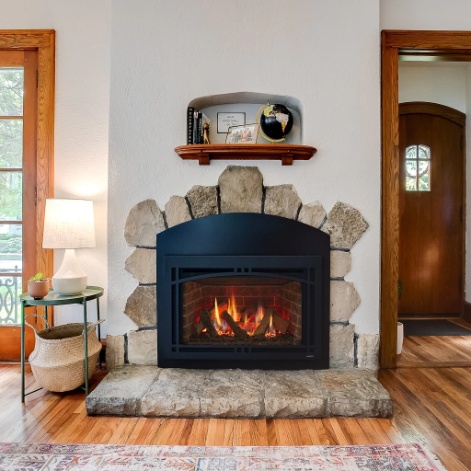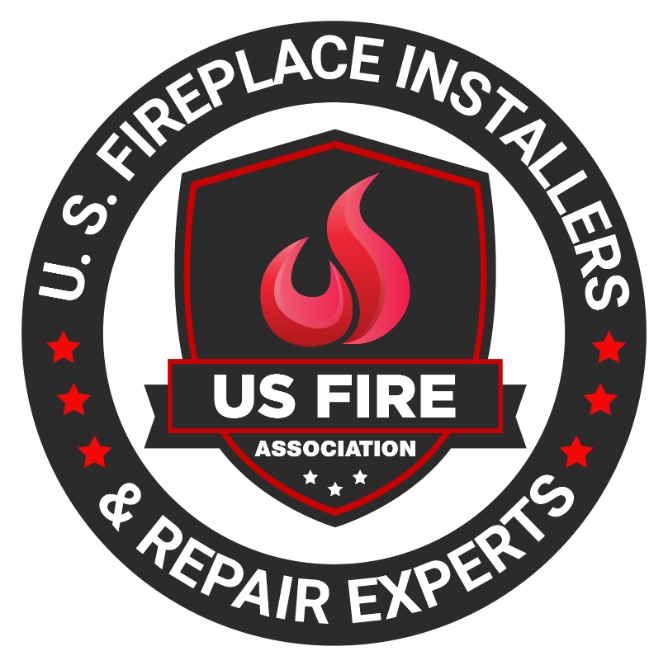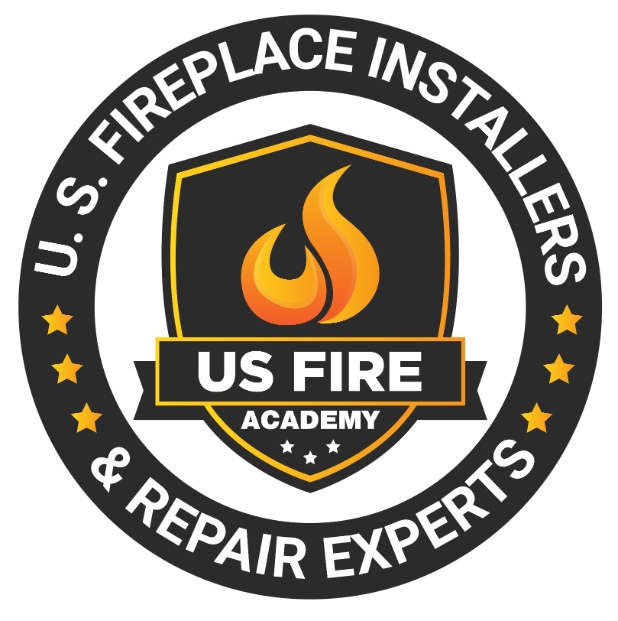Table of Contents
- 1 What Is A Ventless Fireplace?
- 2 How Does A Ventless Fireplace Work?
- 3 What Are The Types Of Ventless Fireplaces?
- 4 What Are The Benefits Of A Ventless Fireplace?
- 5 What Are The Safety Concerns Of A Ventless Fireplace?
- 6 How To Properly Maintain A Ventless Fireplace?
- 7 Is A Ventless Fireplace Right For Your Home?
- 8 Frequently Asked Questions
Looking to add a cozy fireplace to your home but don’t have a chimney? Ventless fireplaces might be the perfect solution for you.
We explore what ventless fireplaces are, how they work, the different types available, the benefits they offer, safety concerns to consider, and how to properly maintain them.
By the end, you will have a better understanding of whether a ventless fireplace is the right choice for your home.
What Is A Ventless Fireplace?
A ventless fireplace, also known as an indoor heating appliance, is a modern fireplace that does not require a chimney for operation.
These fireplaces are designed to provide efficient heating solutions for indoor spaces without the need for traditional ventilation methods. One of the key advantages of ventless fireplaces is their clean-burning technology, which produces minimal emissions and ensures a healthier indoor air quality. In addition to their functional benefits, these fireplaces come in a variety of sleek and contemporary designs, adding a touch of elegance to any room. Their energy-efficient operations make them a popular choice for eco-conscious homeowners looking to reduce their carbon footprint while staying warm and cozy during the colder months.
How Does A Ventless Fireplace Work?
A ventless fireplace operates by providing heat output that enhances room ambiance through efficient heating mechanisms.
This type of fireplace utilizes a system that generates radiant heat, which is dispersed evenly across the room to create a cozy atmosphere. By employing zone heating, these fireplaces target specific areas, allowing for more efficient usage of energy and ensuring that the entire room is warmed effectively. Consequently, the absence of a vent means that all the heat produced stays within the space, reducing heat loss and maximizing the fireplace’s heating capabilities.
Not only do ventless fireplaces provide warmth and comfort, but they also offer a stylish and convenient heating solution for any home.
What Are The Types Of Ventless Fireplaces?
Various types of ventless fireplaces exist, including ethanol, gel fuel, electric, and gas fireplaces, each offering unique features and design options.
These ventless fireplaces vary in their fuel sources, with ethanol fireplaces utilizing bioethanol fuel, gel fuel fireplaces using a gel that produces a clean burn with no smoke, electric fireplaces operating using electricity for convenient heating, and gas fireplaces connecting to a natural gas line or using propane for a traditional and efficient fire.
When it comes to design flexibility, ethanol fireplaces often boast sleek, modern designs, while gel fuel fireplaces offer a classic, cozy aesthetic. Electric fireplaces come in various styles, including wall-mounted, freestanding, or inserts, providing versatile installation options. Gas fireplaces can be easily installed by connecting to a gas line or utilizing propane tanks, making them suitable for a wide range of spaces.
Ethanol Fireplaces
Ethanol fireplaces, fueled by bioethanol, are a stylish addition to any space, providing a heat source without the need for venting.
The bioethanol fuel used in these fireplaces is derived from renewable resources, making them an eco-friendly heating option. Beyond their practical function, ethanol fireplaces also serve as atmosphere enhancers, creating a cozy and inviting ambiance. Their sleek designs and versatility in placement allow them to complement various decor styles, ranging from modern to traditional. Whether used indoors or outdoors, these fireplaces add a touch of sophistication and warmth to any setting, making them a popular choice for those looking to enhance both their living space and eco-consciousness.
Gel Fuel Fireplaces
Gel fuel fireplaces offer a smokeless fire experience, serving as both a decorative piece and a source of heat emanation.
The mesmerizing flame effect of gel fuel fireplaces adds a cozy ambiance to any room, creating a warm and inviting atmosphere. With their minimalist design, they blend seamlessly into modern interiors, enhancing the overall aesthetic appeal of the space. These fireplaces are not only functional but also serve as a stylish focal point in any home, making them a versatile choice for those seeking both warmth and visual appeal.
Electric Fireplaces
Electric fireplaces, such as wall-mounted options, offer a convenient heating solution as an energy-saving appliance for efficient home heating.
These modern electric fireplaces come with advanced features like programmable thermostats, allowing users to set their desired temperature and let the fireplace automatically regulate the heat output for consistent comfort. The portability of these electric fireplaces makes them easy to move around, providing heat exactly where needed. Wall-mounted variants not only save floor space but also add a touch of elegance to any room, seamlessly blending into the decor while offering efficient heating capabilities. With realistic flame effects and adjustable heat settings, these electric fireplaces are both stylish and functional.
Gas Fireplaces
Gas fireplaces, including propane options, provide clean air and a safe heating alternative for indoor spaces.
Propane gas fireplaces offer the advantage of low maintenance, making them a convenient choice for those seeking an off-grid heating solution. With propane as a fuel source, there is no need for wood chopping or ash cleanup, minimizing the effort typically associated with traditional fireplaces.
What Are The Benefits Of A Ventless Fireplace?
Ventless fireplaces offer numerous benefits, including being cost-effective, providing supplemental heating, and ensuring high heat efficiency.
These fireplaces are a great option for homeowners looking to save on installation costs, as they do not require a chimney or venting system. In addition to their affordability, they are known for their efficient heat dispersion, spreading warmth evenly throughout the room. This makes them an excellent choice for individuals seeking to supplement their central heating system during cold weather. Ventless fireplaces also come in a variety of sleek, space-saving designs, allowing them to fit seamlessly into any room without taking up valuable floor space. These fireplaces are a practical and efficient heating solution for modern homes.
Easy Installation
Easy installation is a key feature of ventless fireplaces, providing modern convenience and serving as a sustainable heating option.
These fireplaces are designed for effortless setup, requiring no chimney or venting systems, making them perfect for homes where traditional fireplaces may not be feasible. With their sleek and compact designs, they can be easily integrated into any living space. Ventless fireplaces are an eco-friendly choice, as they operate with a low carbon footprint and promote energy conservation by efficiently heating a room without energy wastage. Their hassle-free installation process and eco-friendly attributes make them a popular choice for those seeking both convenience and sustainability.
No Need For A Chimney
Ventless fireplaces eliminate the need for a chimney. As a result, it makes them suitable for zero clearance installations and ideal for urban living spaces.
This versatile heating option is a game-changer for those looking to add a touch of cozy warmth to their modern living spaces without the constraints of a traditional fireplace. With ventless fireplaces, residents in urban environments can enjoy the ambiance of a flickering flame without the hassle of a chimney. These fireplaces offer flexibility and convenience, providing a sleek and contemporary heating solution for a wide range of living spaces, from compact apartments to spacious lofts.
More Energy Efficient
Ventless fireplaces are more energy efficient compared to traditional options, acting as a reliable heat source while minimizing energy consumption.
These innovative fireplaces offer excellent heat control, allowing users to adjust the temperature according to their needs, without wasting excess energy. By operating without a chimney, ventless fireplaces retain and distribute heat more effectively throughout a room, resulting in a more efficient use of energy. This efficient heat distribution also helps to reduce energy bills, making ventless fireplaces a cost-effective and environmentally friendly choice for homeowners looking to enhance their heating system.
Versatile Design Options
Ventless fireplaces offer versatile design options, combining contemporary design elements with ambient heating functionalities.
These fireplaces come in a variety of styles, ranging from sleek and modern to more traditional designs. With a real flame effect that mimics the look of a traditional fireplace, they can serve as a focal feature in any room. The ambient heat they provide not only adds coziness but also helps to regulate the temperature in the space. Whether you prefer a wall-mounted unit for a minimalist look or a freestanding model for a more statement piece, ventless fireplaces can elevate the ambiance of your home while providing practical heating benefits.
What Are The Safety Concerns Of A Ventless Fireplace?
Despite their benefits, ventless fireplaces pose safety concerns such as carbon monoxide poisoning, oxygen depletion, and fire hazards.
These safety risks stem from the fact that ventless fireplaces operate without a chimney or flue to expel combustion byproducts. This lack of proper ventilation can lead to an accumulation of carbon monoxide, a colorless and odorless gas that can be deadly in high concentrations.
The combustion process in ventless fireplaces consumes oxygen from the room, which can result in oxygen depletion. If not properly maintained, ventless fireplaces can also pose a fire hazard due to the build-up of combustible materials.
Ensuring proper combustion safety and maintaining a well-functioning ventilation system are crucial steps in mitigating these risks.
Carbon Monoxide Poisoning
Carbon monoxide poisoning is a serious risk with ventless fireplaces, emphasizing the need for carbon monoxide detectors and proper ventilation systems to maintain indoor air quality.
Without the presence of a chimney to direct the gases outside, ventless fireplaces can release high levels of carbon monoxide into the home. This colorless, odorless gas can be deadly when inhaled in large quantities, leading to symptoms such as headaches, dizziness, and even death.
Installing carbon monoxide detectors in key areas of the house is crucial in detecting any potential leaks early on. Ensuring that the room is well-ventilated and that the fireplace is regularly serviced can help minimize the risk of carbon monoxide buildup.
Prioritizing smoke-free environments and clean air through proper maintenance can significantly reduce the dangers associated with ventless fireplaces.
Oxygen Depletion
Oxygen depletion is a potential issue with ventless fireplaces, underscoring the importance of oxygen depletion sensors and the value of safe heating alternatives with minimalist designs.
These sensors play a crucial role in maintaining optimal air quality by detecting when oxygen levels are dangerously low, thereby reducing the risk of carbon monoxide buildup.
Safe heating alternatives, such as electric fireplaces or ethanol-burning units, offer modern convenience without compromising safety. These contemporary designs not only enhance the aesthetic appeal of a space but also prioritize the well-being of occupants by eliminating the potential hazards associated with traditional ventless fireplaces.
Fire Hazards
Fire hazards are a concern with ventless fireplaces, stressing the importance of features like automatic shut-off mechanisms. Other features include proper firebox installations, and effective heat dispersion.
These safety precautions are crucial in preventing potential risks associated with ventless fireplaces. Automatic shut-off mechanisms serve as a failsafe to extinguish flames in case of malfunctions or excessive heat. Ensuring correct firebox setups not only enhances the aesthetic appeal. It also minimizes fire hazards by containing flames within designated areas. Efficient heat dispersion mechanisms help in maintaining a comfortable temperature while reducing the risk of overheating. As a consequence, regular maintenance and adherence to safety guidelines are essential for the safe operation of ventless fireplaces.
How To Properly Maintain A Ventless Fireplace?
Maintaining a ventless fireplace involves regular cleaning, conducting gas leak checks, and scheduling annual inspections to ensure its proper functionality.
- When it comes to cleaning your ventless fireplace, it is essential to remove any dust, debris, or pet hair. These must be removes from the burner, logs, and surrounding areas. Regularly vacuuming or dusting these components can prevent blockages and ensure a clean burn.
- Gas leak assessments should be performed at least once a month. Check for any unusual odors or hissing sounds near the fireplace. Scheduling annual inspections with a certified technician can help identify any potential issues early on. This will endure the safety and efficiency of your fireplace for years to come.
Regular Cleaning
Regular cleaning is essential for ventless fireplaces. Consequently, this ensures they remain low maintenance and easy to install for long-term use.
These fireplaces are popular for their space-saving design and convenient operation. This makes them a favorite choice for those seeking a hassle-free heating option. With no smoke emissions, ventless fireplaces provide a clean and environmentally friendly heat source. By incorporating routine cleaning, you can ensure that your ventless fireplace continues to operate efficiently and safely. It will add warmth and ambiance to your living space without the need for complicated upkeep.
Checking For Gas Leaks
Regularly checking for gas leaks is crucial for gas and propane fireplaces, ensuring efficient heating and observing necessary safety precautions.
Gas and propane fireplaces are popular choices for homeowners due to their sustainable heating options and modern heating technology. By inspecting these fireplaces routinely, one can prevent potential hazards and maintain the efficiency of the heating system.
These checks endure a warm and cozy environment. Conducting these checks also promotes a safe living space for you and your loved ones. Taking proactive measures in inspecting gas and propane fireplaces for leaks is an essential part of responsible fireplace ownership.
Annual Inspections
Scheduling annual inspections for ventless fireplaces is crucial to prevent fire hazards. It is also necessary to maintain indoor air quality, and address safety concerns proactively.
Regular maintenance checks on these heating solutions play a vital role in ensuring that the firebox is functioning efficiently. It is crucial to makes sure it is not at risk of potential ignition issues due to wear and tear.
By having a professional from Dreifuss Fireplaces inspect the fireplace annually, homeowners can also have peace of mind. They know that any underlying issues or buildup of debris are promptly identified and rectified. Consequently, the likelihood of unexpected fires or compromised air quality within the home is mitigated.
Contact Dreifuss to schedule your annual fireplace inspection!
Is A Ventless Fireplace Right For Your Home?
Determining if a ventless fireplace is suitable for your home depends on numerous factors. These factors include the need for a heat source, and the desire for a vent-free fireplace. Also included are the intention to enhance the home’s stylish decor.
A ventless fireplace can serve as more than just a heat source. It can become the focal point of a room, adding a cozy ambiance to gatherings or quiet evenings at home. Vent-free options offer convenience and flexibility. Homeowners can enjoy the warmth and beauty of a fireplace without the need for a chimney or venting system. The aesthetic appeal of ventless fireplaces can elevate the overall decor of a space, creating a chic and sophisticated atmosphere.
Frequently Asked Questions
1. What is a ventless fireplace?
A ventless fireplace is an indoor heating appliance that does not need a chimney to operate. It uses clean-burning technology to produce minimal emissions, enhancing indoor air quality while providing efficient heating and stylish designs.
2. How does a ventless fireplace work?
A ventless fireplace works by producing heat that enhances room ambiance through a system that generates radiant heat. It efficiently heats the room without the need for traditional ventilation methods.
3. What are the types of ventless fireplaces?
Ventless fireplaces come in several types, including ethanol, gel fuel, electric, and gas fireplaces. Each type offers unique features and design options suitable for different preferences and needs.
4. What are the benefits of a ventless fireplace?
Benefits of a ventless fireplace include cost-effectiveness, and providing supplemental heating. High heat efficiency, easy installation and no need for a chimney are other benefits. Finally, benefits also include energy efficiency, and versatile design options.
5. What are the safety concerns of a ventless fireplace?
Safety concerns with ventless fireplaces include carbon monoxide poisoning, oxygen depletion, and fire hazards. It’s important to have carbon monoxide detectors, ensure proper ventilation, and follow safety guidelines to mitigate these risks.
6. How to properly maintain a ventless fireplace?
Proper maintenance of a ventless fireplace involves regular cleaning, and checking for gas leaks. In addition, scheduling annual inspections to ensure safety, efficiency, and longevity of the fireplace is necessary.
Latest Articles

What Is An NG (Natural Gas) Indicator And Why You Need It For Your Fireplace
Table of Contents1 Understanding Natural Gas Fireplaces2 What is an NG Indicator?3 Importance of NG Indicators for Safety4 Types of NG Indicators5 Installation and Maintenance of NG Indicators6 Signs of a Faulty NG Indicator7 Frequently Asked Questions Natural gas fireplaces are a favored option among numerous homeowners due to their convenience and effectiveness. But, what is an NG (Natural Gas) indicator and why you need it for your fireplace? It is imperative to comprehend how they function and the significance of having an NG (Natural Gas) indicator for safety purposes. This article delves into the definition and significance of NG indicators. We will discuss the potential hazards associated with the absence of one and the various types of indicators accessible. Also, we will discuss installation and maintenance recommendations, and methods to recognize and rectify issues with malfunctioning indicators. Stay well-informed and ensure the safety of your home by referring to this exhaustive guide. Understanding Natural Gas Fireplaces Natural gas fireplaces serve as an efficient and convenient heating option for numerous households. They utilize natural gas as a fuel source to deliver consistent warmth and ambiance. How They Work and Why They Need NG Indicators The operation of natural gas fireplaces involves igniting natural gas to generate heat. This process requires diligent monitoring to ensure both safety and efficiency, a task facilitated by the use of NG indicators. NG indicators play a critical role in detecting potential gas leaks. They enable residents to promptly address and mitigate any associated hazards. Through continuous monitoring of gas levels and providing timely warnings and alerts, NG indicators uphold a secure indoor environment. It is imperative to ensure that these indicators function properly to facilitate the effective operation of natural gas fireplaces. This helps mitigate the inherent risks linked to gas leaks. What is an NG Indicator? An NG indicator is a specialized device equipped with advanced sensors and technology. It is specifically designed to detect natural gas leaks and monitor gas pressure in appliances, such as fireplaces. Definition and Purpose The NG indicator functions as a detector that monitors gas appliances for potential leaks. It provides essential functionality to ensure safety in households utilizing natural gas. These detectors play a crucial role in protecting residences by notifying occupants of dangerous gas leaks long before they escalate into perilous situations. Through continuous monitoring of gas levels in the vicinity, NG indicators offer an additional layer of protection. This is particularly important in properties that rely on gas-operated fireplaces or stoves. These devices not only help avert potential disasters but also enhance the overall peace of mind of homeowners. They assure them that their living spaces are equipped with reliable safety features. Importance of NG Indicators for Safety Natural gas indicators are essential for maintaining safety in households equipped with natural gas appliances. These devices serve as a proactive measure to promptly detect gas leaks. This offers homeowners a sense of security and assurance. Potential Dangers of Not Having an NG Indicator The absence of an NG indicator in residences equipped with natural gas appliances can pose significant hazards. This includes the risk of undetected gas leaks , carbon monoxide poisoning , and pilot outages that may lead to dangerous situations. These potential risks can profoundly impact indoor air quality. They directly influence the health and safety of individuals residing in the household. Undetected gas leaks can go unnoticed, gradually permeating the air and creating a potentially explosive environment. Insufficient ventilation from undetected exposure to carbon monoxide can lead to serious health complications. These range from mild symptoms such as dizziness to fatal poisoning. Without proper monitoring from an NG indicator, families are left susceptible to these concealed threats. This underscores the critical importance of implementing proactive measures to mitigate such risks. Types of NG Indicators Indicators for Natural Gas (NG) are available in diverse types. Each presents distinct detection capabilities tailored to specific requirements, encompassing both manual and automated alternatives. Manual vs. Automatic Indicators Manual NG indicators require user intervention for monitoring gas levels and identifying leaks. On the other hand, automatic indicators employ sophisticated technology to deliver continuous, real-time monitoring. This heightened efficiency and oversight enhance safety protocols. Conventional manual indicators rely on individuals to physically inspect and evaluate gas levels periodically. This renders them more susceptible to human errors. Conversely, automatic indicators feature sensors capable of promptly detecting even the most minute fluctuations in gas levels. This establishes a more dependable and precise monitoring mechanism. Automatic indicators can activate alerts and shut-off systems upon detecting a leak. This ensures immediate action to avert potential hazards. This advanced technology enhances safety protocols and instills a sense of command and assurance among users. Installation and Maintenance of NG Indicators The reliable and accurate performance of NG indicators necessitates proper installation and consistent maintenance. This often entails professional installation and adherence to recommended service guidelines. Proper Installation and Regular Maintenance Tips The proper installation of NG indicators involves adhering to the specifications in the user manual. Maintenance protocols entail strict adherence to a predetermined maintenance schedule to ensure sustained operational efficiency. During the installation phase, it is imperative to verify that the NG indicators are securely affixed in the designated location as stipulated by the manufacturer. Crucial steps include confirming power source compatibility and ensuring proper grounding of the device to optimize performance. Calibration of the indicator must be executed meticulously to ensure precise readings. Regarding maintenance, essential practices include regular inspection for signs of wear, thorough cleaning of the indicator components, and routine functionality tests. By allocating time to a consistent maintenance regimen, the NG indicator can operate with optimal efficiency over an extended duration. Signs of a Faulty NG Indicator Recognizing indicators of a malfunctioning NG indicator is essential for upholding safety and performance standards. Inaccuracies and detection issues can undermine the efficacy of these devices. Identifying and Addressing Issues The process of identifying and addressing issues related to NG (natural gas) indicators requires a systematic troubleshooting approach. This ensures their optimal performance

What You Need To Know About Gas Log Set Safety And Installation Considerations
Table of Contents1 Understanding Gas Log Sets2 Safety Considerations for Gas Log Sets3 Installation Guidelines for Gas Log Sets4 Maintaining and Troubleshooting Gas Log Sets5 Frequently Asked Questions Gas log sets are a favored option among homeowners seeking to enjoy the comfort and atmosphere of a conventional fireplace without the inconvenience of wood. This article tells you what you need to know about gas log set safety and installation considerations. Before incorporating one into your residence, it is imperative to understand the safety considerations associated with their use. This discussion delves into the potential hazards linked with gas log sets. It presents crucial precautions to uphold the safety of your home. Also, it outlines proper installation procedures and offers insight into common errors to avoid. Finally, it provides advice on maintenance and troubleshooting. Gain comprehensive knowledge on gas log set safety and installation considerations. Understanding Gas Log Sets Comprehending gas log sets is essential for individuals seeking to elevate their fireplace experience, and for gas lag set safety and installation. These heating appliances can operate on either natural gas or propane. In addition, they are available in a range of styles, including vented, ventless, and vent-free options. They provide an array of benefits and customization opportunities through various fireplace accessories. What are Gas Log Sets? Gas log sets are meticulously crafted artificial logs. They are designed to imitate the appearance and functionality of authentic wood logs within fireplaces. These gas log sets typically consist of ceramic or refractory concrete logs that have been skillfully molded and painted. This allows them to replicate the natural grain and texture of real wood. The logs are arranged in various configurations within the fireplace. They establish a realistic and welcoming ambiance. In addition to the logs, gas log sets often include fireplace accessories such as glowing embers. Accessories also include decorative stones, and even pine cones to enhance the overall aesthetic appeal. Homeowners can select from an array of placement options. These include traditional wood stack, cascading driftwood, or a contemporary geometric arrangement. Homeowners can align their preferred style and design preferences. Safety Considerations for Gas Log Sets Safety considerations for gas log sets are of utmost importance to guarantee a secure and pleasant fireplace experience. It is essential to address potential hazards such as carbon monoxide exposure, gas leaks, and fire safety to maintain a safe environment for homeowners. Potential Hazards and Precautions Gas log sets come with potential hazards that must be taken seriously, including the risks of gas leaks, carbon monoxide poisoning, and fire incidents. It is imperative to establish and adhere to rigorous safety measures to ensure the well-being of individuals and properties involved in the use of gas log sets. Gas leaks represent a significant hazard when utilizing gas log sets. They can result in the accumulation of combustible gas within the premises, heightening the possibility of explosions or fires. Carbon monoxide, an insidious gas generated during incomplete combustion, poses a grave threat due to its colorless and odorless nature, making it undetectable without proper monitoring. To address these risks effectively, it is vital to install carbon monoxide detectors and gas leak sensors in the vicinity of the gas logs. Routine maintenance checks on the gas log system, including cleaning and inspection procedures, are critical to ensure safe operations and the prompt identification of potential issues. In case of a gas leak or suspected presence of carbon monoxide, immediate evacuation of the affected area is paramount, followed by prompt contact with emergency services. Recognizing the distinct odor of rotten eggs associated with natural gas can serve as an early warning sign, prompting swift actions to avert any potential accidents. Installation Guidelines for Gas Log Sets The installation of a gas log set necessitates meticulous planning and strict adherence to specific guidelines. This includes verifying a secure gas connection, ensuring proper gas lines are in place, and complying with local building codes. Often, the complexity of these requirements may require the expertise of a certified technician. Proper Installation Techniques The appropriate installation procedures for gas log sets involve the secure connection of gas lines, meticulous adherence to installation manuals, and strict compliance with local building codes. It is imperative to prioritize the guarantee of secure gas connections to avert leaks and potential safety hazards. During the installation of gas log sets, utilizing suitable sealants and fittings is essential to establish a tightly sealed connection. The correct installation of gas lines is critical for both the safety and operational efficacy of the gas log set. Reference to the installation manual is highly advisable for detailed, step-by-step guidance to prevent inaccuracies and ensure the successful establishment of the gas log set. Consistently adhering to building codes and regulations upholds safety standards. Seeking guidance and confirmation from a certified technician before and after installation can offer invaluable support and assurance throughout the process. Common Installation Mistakes to Avoid It is imperative to avoid common installation errors to ensure the secure and effective operation of gas log sets. This includes verifying proper gas connections and compliance with building codes. Improper gas connections can result in leaks and potential hazards, underscoring the importance of verifying the tightness and correct alignment of all fittings. Failure to adhere to building codes can lead to structural complications, penalties for non-compliance, or even safety concerns. To prevent these oversights, it is advised to consult the manufacturer’s installation guidelines and strictly adhere to local regulations. Engaging a certified technician for the installation of gas log sets guarantees that the procedure is carried out accurately and securely. This provides assurance that the system is functioning as intended. Maintaining and Troubleshooting Gas Log Sets Regular maintenance and troubleshooting of gas log sets are imperative to uphold their optimal performance and safety. This includes thorough examination of the pilot light, pilot assembly, and other gas appliances to preserve heating efficiency and promptly resolve any arising issues. Tips for Maintenance and Repair Ensuring the proper maintenance of your gas log set necessitates conducting

Key Considerations For Using Compressed Liquid Propane In Fireplace Installation
Table of Contents1 What is Compressed Liquid Propane?2 Benefits of Using Compressed Liquid Propane in Fireplaces3 Safety Precautions for Installing Compressed Liquid Propane Fireplaces4 Installation Process for Compressed Liquid Propane Fireplaces5 Maintenance and Care for Compressed Liquid Propane Fireplaces6 Alternative Fuel Options for Fireplaces7 Frequently Asked Questions If you are contemplating the use of compressed liquid propane in your fireplace installation, this discussion will delve into the advantages of adopting this alternative fuel option. These benefits include enhanced efficiency, cost savings, and important safety precautions to consider. Furthermore, a detailed step-by-step guide on the installation process will be provided, along with recommendations for maintenance and care. A comparison of various fuel options for fireplaces will also be conducted to assist you in making an informed decision. We encourage you to stay engaged to gain insights into optimizing your fireplace’s capabilities with compressed liquid propane. What is Compressed Liquid Propane? Compressed Liquid Propane is a versatile energy source contained in a high-pressure propane tank. It finds extensive utility in both residential and commercial settings, prominently including fireplaces. Recognized for its convenience and efficiency, Compressed Liquid Propane emerges as a favored option for heating residential spaces and facilitating culinary pursuits across various environments. Additionally, it serves as a viable fuel substitute in vehicular contexts, portable cooktops, and outdoor grilling scenarios due to its propensity for clean combustion. The attribute of portability, coupled with ease of storage, positions Compressed Liquid Propane as an optimal energy source for individuals residing off the conventional grid. It is also great for engaging in outdoor activities such as camping and recreational vehicle (RV) travel. Moreover, the high energy density inherent to Compressed Liquid Propane renders it a dependable choice for sustaining generators during instances of power disruptions. Benefits of Using Compressed Liquid Propane in Fireplaces Utilizing Compressed Liquid Propane for fireplace installation presents several benefits. These include enhanced fuel efficiency, convenience, cost-effectiveness, and a favorable environmental footprint. These attributes render it a recommended option for heating solutions, applicable to both on-grid and off-grid settings. Efficiency and Cost Savings The utilization of Compressed Liquid Propane in fireplaces offers significant advantages, notably in terms of high fuel efficiency and cost-effectiveness. These attributes are underscored by the exceptional BTU rating and overall heating efficiency of Compressed Liquid Propane. The elevated fuel efficiency exhibited by Compressed Liquid Propane fireplaces necessitates less fuel to generate the same level of heat compared to traditional wood-burning fireplaces or electric heating systems. Consequently, homeowners can realize cost savings on their heating expenditures over an extended period. Moreover, the clean-burning characteristics of propane minimize maintenance costs linked to soot and ash cleanup. This further enhances the cost-effectiveness of employing propane fireplaces. Safety Precautions for Installing Compressed Liquid Propane Fireplaces Ensuring safety is of utmost importance during the installation of Compressed Liquid Propane fireplaces. This requires strict adherence to safety regulations, meticulous attention to proper ventilation requirements, careful control of ignition sources, and the incorporation of carbon monoxide and gas leak detection systems. Important Safety Measures Essential safety protocols for the installation of Compressed Liquid Propane fireplaces encompass adherence to fire safety regulations. Engaging in professional assessments and employing sophisticated gas leak and carbon monoxide detection mechanisms is crucial. Professional evaluations play a critical role in identifying any prospective hazards or irregularities within the fireplace infrastructure. These assessments are vital in ensuring the operational integrity of all components and compliance with safety protocols. Routine inspections serve to forestall potential fire incidents, gas discharges, or carbon monoxide emissions that could pose significant threats to both the property and individuals in the vicinity. The utilization of advanced gas leak and carbon monoxide detection systems serves as an additional safeguard by promptly notifying occupants of any elevated levels of these hazardous gases. Installation Process for Compressed Liquid Propane Fireplaces The installation procedure for Compressed Liquid Propane fireplaces encompasses several critical steps. These include: Adhering to installation guidelines Correctly positioning the propane tank Ensuring precise gas line installation Optimizing heat output Monitoring pressure regulation Establishing the pilot light Step-by-Step Guide The installation process of Compressed Liquid Propane fireplaces involves a systematic approach. This begins with the construction of the firebox, followed by the installation of the gas control valve, setup of the ignition system, design of the flue, and verification of a suitable combustion air supply. The construction of the firebox assumes critical importance as it serves as the foundation of the fireplace structure. It securely holds the combustible materials in place. Subsequently, the gas control valve plays a key role in managing the propane flow, guaranteeing safe and efficient operation. The installation of the ignition system facilitates convenient and reliable fire initiation. Designing the flue is a necessary step to direct exhaust gases outside, thus preventing their accumulation indoors. Moreover, ensuring a proper combustion air supply is essential to sustain optimal burning conditions and enhance fuel consumption efficiency. Each component contributes significantly to the functionality and safety of the fireplace installation process. This underscores the importance of meticulous attention to detail and adherence to established protocols. Maintenance and Care for Compressed Liquid Propane Fireplaces Consistent maintenance and attention to Compressed Liquid Propane fireplaces are imperative to guarantee their optimal functionality. This includes adherence to prescribed maintenance protocols, regular chimney upkeep, prevention of soot accumulation, and scheduling of routine propane deliveries and professional inspections. Tips for Keeping Your Fireplace in Good Condition For the maintenance of your Compressed Liquid Propane fireplace, it is essential to conduct regular checks on ignition sources. Monitor flame appearance, clean the gas burner and pilot assembly, and verify the correct operation of the safety shut-off valve. The inspection of ignition sources requires a detailed examination of the electronic igniter. This helps identify any signs of damage or corrosion and ensures proper sparking upon activation. Monitoring flame appearance involves observing a consistent blue flame with minimal flickering, which signifies efficient combustion. Cleaning the gas burner and pilot assembly can be performed using a soft brush or compressed air to eliminate any dirt or debris that may
